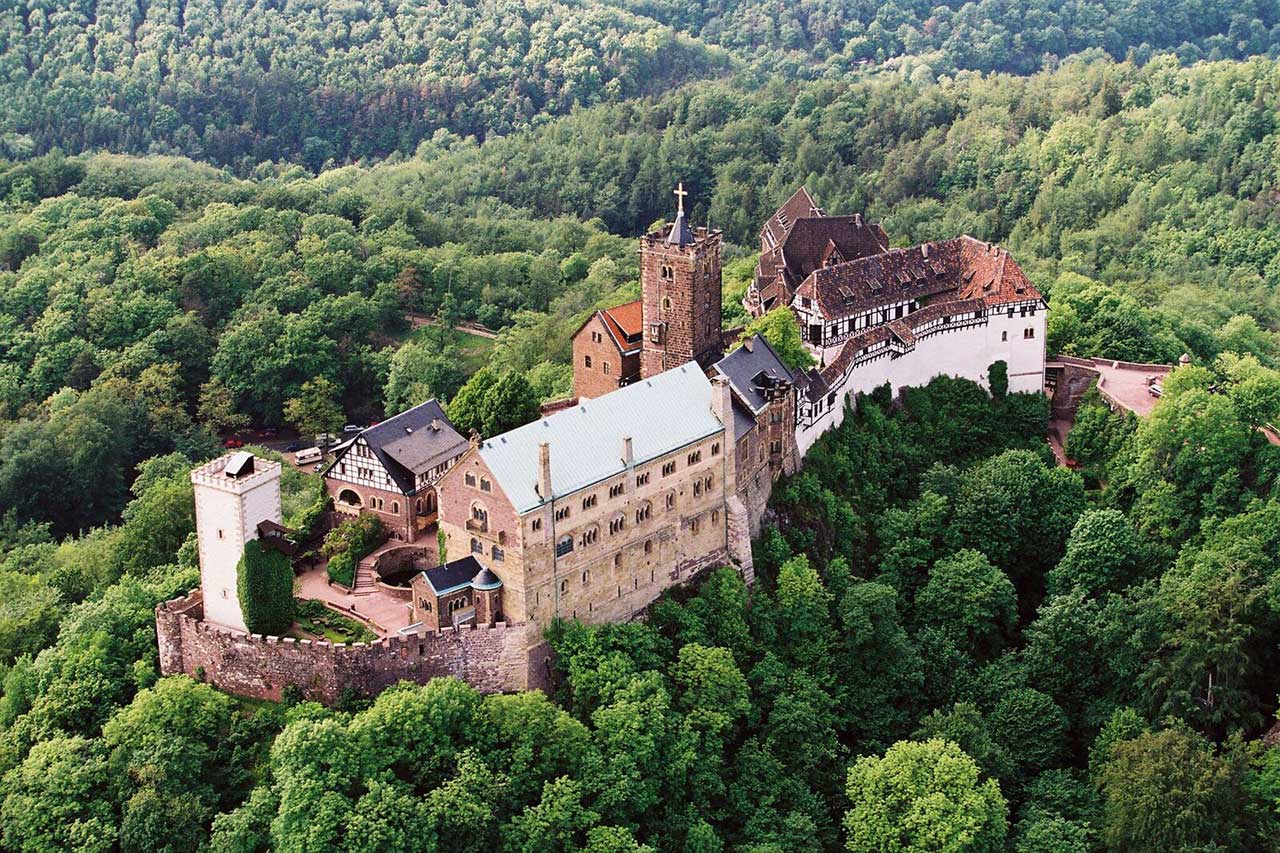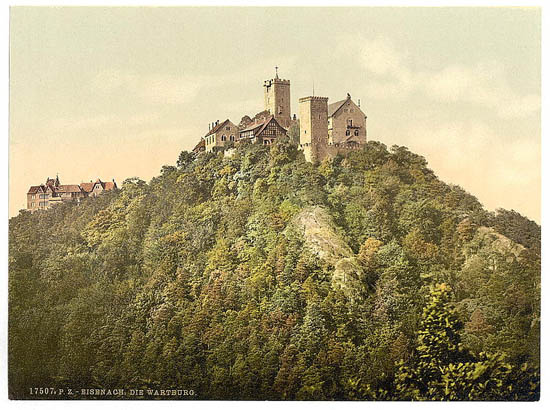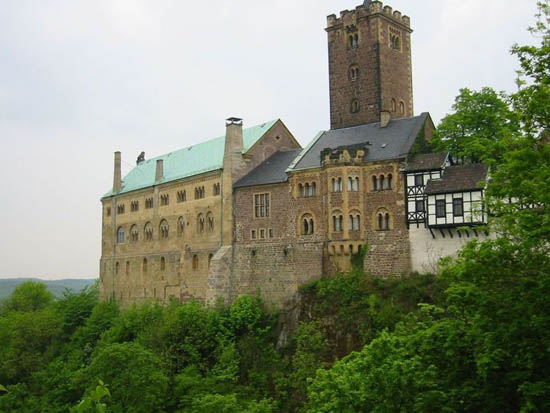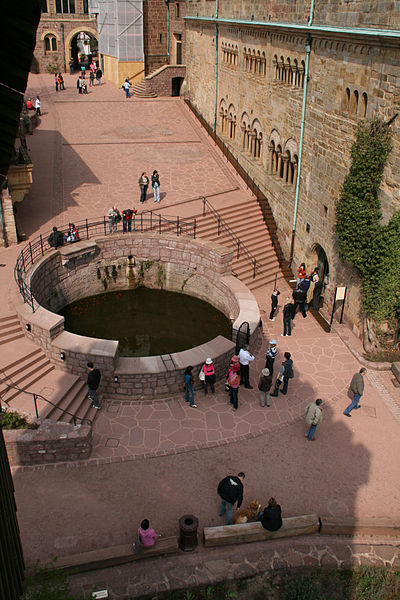The Wartburg

Wartburg Castle is on a hill above the town of Eisenach, in the most mythic part of Germany. To the west is the Fairytale Road, associated with the Brothers Grimm, and to the north is the Brocken in the Harz Mountains, where the witches ride on Walpurgisnacht in Goethe’s Faust. Somewhere around here too is the Venusberg, a mountain with a secret underground grotto where, back in medieval times, Venus and her girls used to lure Christian knights from their true path. Instead of keeping their eye on the Virgin Mary or the Holy Grail, they fell into a life of sin. Shown below in an image from the 1890’s.

The Wartburg and the Venusberg are linked in Wagner’s opera Tannhäuser (1845). In a famous singing contest held on the Wartburg, Tannhäuser loses and he consoles himself in Venus’ arms in the Venusberg for seven years. As a Christian morality tale, it recalls such stories as La Belle Dame Sans Merci as well as classical myths such Odysseus and Calypso. Tannhäuser , after returning to this world, eventually goes back to the Venusberg to what can only have been his eternal damnation.
During the early years of the Reformation, Martin Luther, who had lived in Eisenach as a student, hid out at the Wartburg in 1521-22, after being excommunicated by the Pope. While there he completed the first translation of the New Testament into German and fought the Devil on a daily basis. Legend has it that Luther even flung an inkwell at the Devil in one of the rooms here and it struck the wall. This was likely a misunderstanding of his wry comment that he had "driven the devil away with ink" (i.e. with his Bible translation). It seems equally plausible that his spiritual battles were partly sexual in nature - he was married a few years later, as monks and nuns began defecting from the official policy of celibacy.
Johann Sebastian Bach was from Eisenach, born there in 1685, and Goethe stayed at the Wartburg periodically, spending five weeks here in 1777 and drawing portraits of the castle. It was also said that Christian Rosenkreuz, the supposed founder of Rosicrucianism, was born here in 1378.
Christianity and Romanticism fused into nationalism when students assembled there in 1817 during the so-called Wartburg Festival to reformulate an argument for a unified Germany. As a result, Wartburg has strong associations with German Romanticism, the Lutheran Reformation and German nationalism.

Inside is the large cistern - essential for defensive purposes - except the Wartburg was never used militarily. It shows some of the recent restoration work underway.

